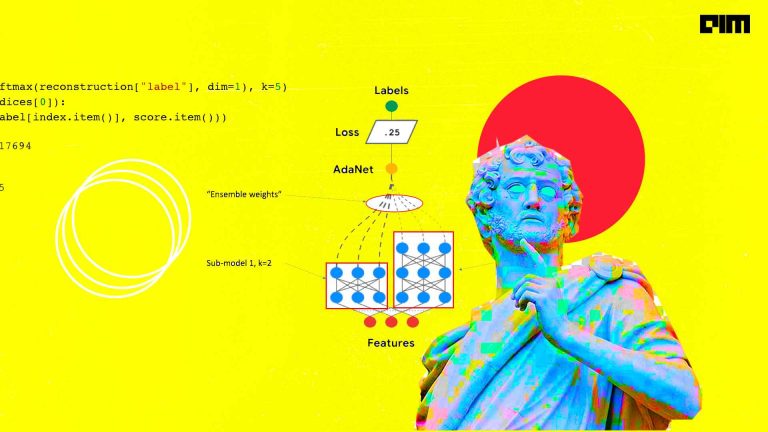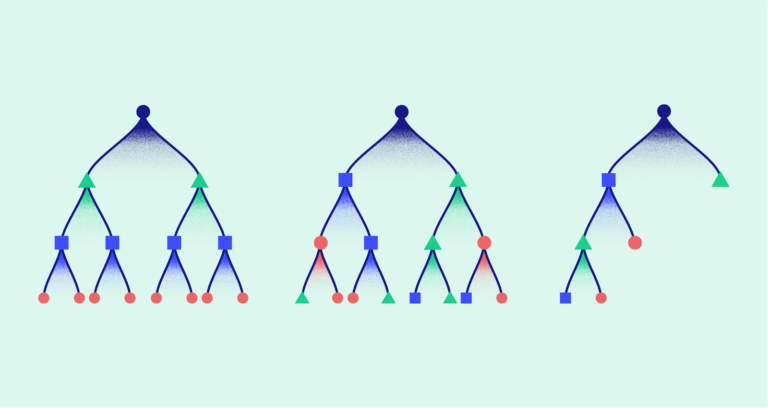
For someone who has an interest in Data Science, Regression is probably one of the first Predictive Models that s/he may begin with. Regression is easier to understand and even easier to implement considering all those ready made packages and libraries all set to perform complex mathematical computations effortlessly without leaving his or her brain squashed.
Having said that, there are lots of regression models or algorithms that one can use while building Machine Learning applications. But one of the most challenging things is to find a model with the least variances in predictions. Even after going through rigorous steps of model selection to come up with a best fitting model you may still face high variance in output on executing the same model that is tested against the same data multiple times.
The StackingCVRegressor
Ensemble learning is a technique that combines the skills of different algorithms in predicting for a given sample of data. A technique to combine the best of multiple algorithms which can give more stable predictions with very less variance than what we get with a single regressor. The StackingCVRegressor is one such algorithm that allows us to collectively use multiple regressors to predict.
The StackingCVRegressor is provided by the mlxtend.regressor package in Python.
How StackingCVRegressor Predicts
The StackingCVRegressor has two levels of regressors, level one regressors and level two regressor and uses a concept called out-of-fold predictions.
It starts by splitting the dataset into k folds in k successive rounds and using k-1 folds to fit the level one regressors. The remaining one fold is then used by the first level regressors to predict. These predictions then flow into the level two regressor as input. Once the training is finished the entire dataset is used to fit the level one regressors. Click here to go to the official GitHub for StackingCVRegressor.
Using The StackingCVRegressor In Python
Let us get our hands dirty by writing a Python code to build a regression model using the StackingCVRegressor.
We will be using the data from one of the hottest hackathons on the Internet, Predicting Restaurant Food Cost Hackathon by Machinehack.
Getting the Datasets
Head to MACHINEHACK’s Predicting Restaurant Food Cost Hackathon by clicking here. Sign Up and start the course. You will find the data set as PARTICIPANTS_DATA_FINAL in the Attachments section.
Having trouble finding the data set? Click here to go through this simple tutorial to help yourself.
Lets Code!
Since this tutorial is to help you with the StackingCVRegressor, I will be skipping all the processes till Modelling (excluding). You can use the following resources to help you till this stage.
- A Complete Guide to Cracking The Predicting Restaurant Food Cost Hackathon By MachineHack
- Hands-on Tutorial On Data Pre-processing In Python
After following through all the stages till Modelling, You are ready to build the StackingCVRegressor for the dataset in hand.
The data sets after preprocessing will look like what is shown below :
Creating a New Training Set and Validation Set
For validation, we will split the new_data_train into two data sets data_train and data_val. Execute the following code block to generate new dependent and independent variable sets from the newly formed data_train and data_val datasets.
from sklearn.model_selection import train_test_split
data_train, data_val = train_test_split(new_data_train, test_size = 0.2, random_state = 2)
#Classifying Independent and Dependent Features
#_______________________________________________
#Dependent Variable
Y_train = data_train.iloc[:, -1].values
#Independent Variables
X_train = data_train.iloc[:,0 : -1].values
#Independent Variables for Test Set
X_test = data_val.iloc[:,0 : -1].values
Applying Feature Scaling
#Feature Scaling
#________________
from sklearn.preprocessing import StandardScaler
sc = StandardScaler()
X_train = sc.fit_transform(X_train)
X_test = sc.transform(X_test)
Y_train = Y_train.reshape((len(Y_train), 1)) #reshaping to fit the scaler
Y_train = sc.fit_transform(Y_train)
Y_train = Y_train.ravel()
RMLSE For Model Evaluation
def score(y_pred, y_true):
error = np.square(np.log10(y_pred +1) - np.log10(y_true +1)).mean() ** 0.5
score = 1 - error
return score
actual_cost = list(data_val['COST'])
actual_cost = np.asarray(actual_cost)
We will first evaluate the performances of individual algorithms on our data set.
eXtreme Gradient Boosting
######################################################################
#eXtreme Gradient Boosting
############################################################################
#Importing and Initializing the Regressor
from xgboost import XGBRegressorxgbr = XGBRegressor()
#Fitting the data to the regressor
xgbr.fit(X_train, Y_train)
#Predicting the Test set results
y_pred_xgbr = sc.inverse_transform(xgbr.predict(X_test))
#Evaluating
print("\n\nXGBoost SCORE : ", score(y_pred_xgbr, actual_cost))
Output:
XGBoost SCORE : 0.8132790047309137
Random Forest Regression
######################################################################
#Random Forest Regression
############################################################################
#Importing and Initializing the Regressor
from sklearn.ensemble import RandomForestRegressor
rf = RandomForestRegressor(n_estimators=100, random_state=1)
#Fitting the data to the regressor
rf.fit(X_train, Y_train)
#Predicting the Test set results
y_pred_rf = sc.inverse_transform(rf.predict(X_test))
#Evaluating
print("\n\nRandom Forest SCORE : ", score(y_pred_rf, actual_cost))
Output:
Random Forest SCORE : 0.8241776753311784
Linear Regression
######################################################################
#Linear Regression
############################################################################
#Importing and Initializing the Regressor
from sklearn.linear_model import LinearRegression
lr = LinearRegression()
#Fitting the data to the regressor
lr.fit(X_train,Y_train)
#Predicting the Test set results
Y_pred_linear = sc.inverse_transform(lr.predict(X_test))
#Evaluating
print("\n\nLinear Regression SCORE : ", score(Y_pred_linear, actual_cost))
Output :
Linear Regression SCORE : 0.7123640090219118
StackingCVRegressor
#####################################################################
#Stacking Ensemble Regression
###########################################################################
#Importing and Initializing the Regressor
from mlxtend.regressor import StackingCVRegressor
#Initializing Level One Regressorsxgbr = XGBRegressor()
rf = RandomForestRegressor(n_estimators=100, random_state=1)
lr = LinearRegression()
#Stacking the various regressors initialized before
stack = StackingCVRegressor(regressors=(xgbr ,rf, lr),meta_regressor= xgbr, use_features_in_secondary=True)
#Fitting the data
stack.fit(X_train,Y_train)
#Predicting the Test set results
y_pred_ense = sc.inverse_transform(stack.predict(X_test))
#Evaluating
print("\n\nStackingCVRegressor SCORE : ", score(y_pred_ense, actual_cost))
Output :
StackingCVRegressor SCORE : 0.827546146596208
Conclusion
We can see a slight improvement in the score of StackingCVRegressor compared to the individual algorithms, however, this may not always be the case. StackingCVRegressor may turn out to be less or more efficient in terms of accurate predictions than individual algorithms depending on the data and the level one regressor used. One thing which can be certain though is that the predictions from StackingCVRegressor can be deemed stable and is expected to show less variance due to the very fact that it combines the skills of a variety of algorithms.



















































































